The OnePlus 10 Pro is the latest version of this flagship model. It has the specs you’d expect from a top-shelf smartphone, including the newest and fastest Snapdragon chip (the 8 Gen 1) and a 6.7″ display with 120 Hz refresh rate. Even more elite, the cameras were made with Hasselblad (tested by our engineers and reviewed here). One important difference between this model and its competitors is the price: at about $899 it’s significantly less expensive than some other flagships with the same kind of specifications.
The brand puts a special emphasis on this model’s aptitude for gaming: “With ultra-precise control, reduced latency and immersive feedback, your competitive advantage has arrived. Enhanced by Dolby Atmos and stereo speakers, transform your gaming.”
We put the OnePlus 10 Pro through our rigorous DXOMARK Audio test suite to measure its performance both at recording sound using its built-in microphones, and at playing audio back through its speakers. In this review, we will break down how it fared in a variety of tests and several common use cases.
Key audio specifications include:
- Two speakers, one top front-firing, the other bottom side-firing
- Dolby Atmos
- Noise cancellation support
- Type-C port
About DXOMARK Audio tests: For scoring and analysis in our smartphone audio reviews, DXOMARK engineers perform a variety of objective tests and undertake more than 20 hours of perceptual evaluation under controlled lab conditions. This article highlights the most important results of our testing. Note that we evaluate both Playback and Recording using only the device’s built-in hardware and default apps.
(For more details about our Playback protocol, click here; for more details about our Recording protocol, click here.)
Test summary
Scoring
Sub-scores and attributes included in the calculations of the global score.

OnePlus 10 Pro


 125th
125th 69th
69thPlayback
Pros
- Clear tonal balance
- Decent performance in volume and artifacts
Cons
- Latency with play/pause button
- Aggressive timbre at maximum volume
- Lack of punch
- Lack of low-end
Recording
Cons
- Less than stellar dynamics performance
- Uneven localizability
With a global score of 66, the OnePlus 10 Pro is toward the bottom of our database rankings among Ultra-Premium phones. The Oppo Find X5 Pro (Oppo is the parent company of OnePlus) also earned a 66, while the previous model in this line, the OnePlus 9 Pro, earned a 69.
The OnePlus 10 Pro was much more deft as a recording device, especially in capturing a satisfying and rich timbre, than it was as a medium for listening to audio content, where it produces a timbre that is a little thin and lacking in both low- and high-ends of the frequency spectrum. It’s functional, but it’s not going to please audiophiles. With the exception of volume and artifacts, where it compares fairly well to similarly priced smartphones, it was average or below average as a tool for playback.
As a recording device, the OnePlus 10 Pro scored well in the timbre attribute and was about average in the other attributes. In some regards, as in the spatial attribute, its performance depended on the situation. In localizability — the ability to pinpoint sound sources in the stereo field — the OnePlus device did fairly well if you were shooting video indoors or using the memo app indoors. Quiet environments produced better results. In the scenarios involving a lot of background noise outdoors, localizability was not at all great, and background was too prominent.
Sub-scores explained
The DXOMARK Audio overall score of 66 for the OnePlus 10 Pro is derived from its Playback and Recording scores and their respective sub-scores. In this section, we’ll take a closer look at these audio quality sub-scores and explain what they mean for the user.
Playback
Listen to the tested smartphone’s playback performance in this comparison with some of its competitors:

Timbre
OnePlus 10 Pro
59
89
Timbre tests measure how well a phone reproduces sound across the audible tonal range and takes into account bass, midrange, treble, tonal balance, and volume dependency.
The score in the timbre attribute is among the lowest in our database for Ultra-Premium smartphones, and three points down from the score of last year’s model, the OnePlus 9 Pro. That said, the tonal balance is clear, with a focus on high midrange and lower treble. This assists with intelligibility, but it can sound harsh at times. Treble lacks high-end extension, and thus brilliance, and furthermore it doesn’t sound very natural because of the prominence of low treble.
Despite a nice upper bass presence, the low-end is also lacking, with receding low-end extension and weak bass. Because the tonal balance doesn’t provide enough low-midrange support, it sounds a bit thin and high-midrange-centric. When holding the device in portrait mode, the timbre displays even more canniness. At soft volume, the reduction of high-midrange and lower treble mitigates the lack of low-midrange, even if it is still not sufficient. At maximum volume, the tonal balance benefits from a stronger low-midrange body, but bass remains too weak, and moreover treble becomes aggressive. This is especially noticeable when gaming; special effects can sound unpleasant. Thanks to Dolby Atmos, the user can choose from a few presets. We recommend using the “Movie” preset, which seems to enhance bass and treble strength.

Dynamics
OnePlus 10 Pro
64
81
DXOMARK’s dynamics tests measure how well a device reproduces the energy level of a sound source, and how precisely it reproduces bass frequencies.
The OnePlus 10 Pro is about average in dynamics. Attack is fairly snappy, but at maximum volume it becomes quite crushed, and it’s weak at softer volumes. The lack of low end hinders bass precision, resulting in a lack of sustain in the bass envelope. Whether at soft or maximum volume, the performance retains these flaws. The 10 Pro is not very punchy, mainly due to its lack of low-midrange energy.
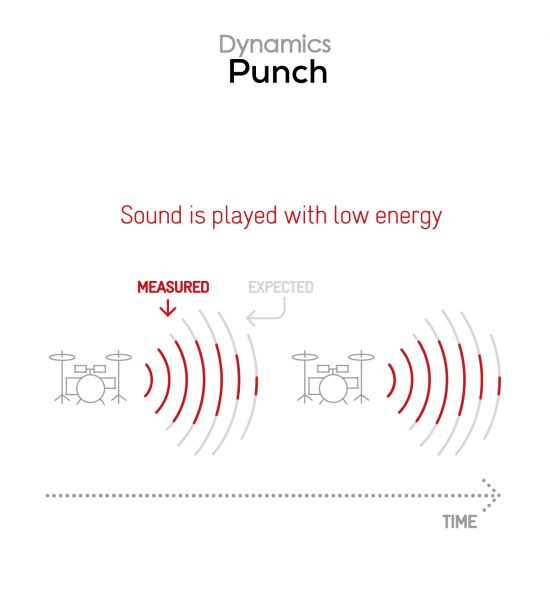
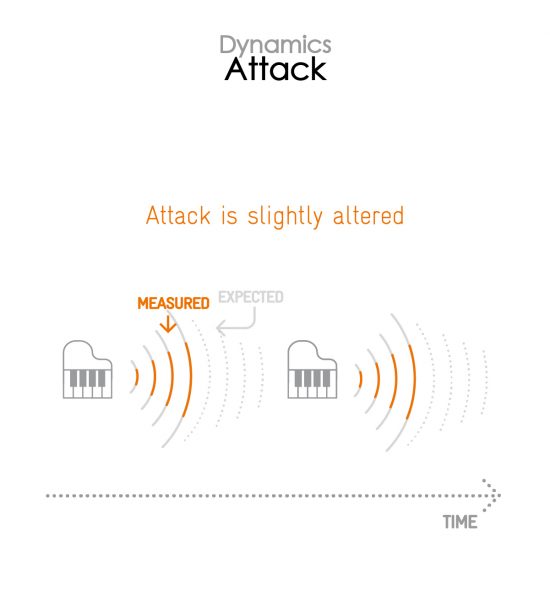

Spatial
OnePlus 10 Pro
56
88
The sub-attributes for perceptual spatial tests include localizability, balance, distance, and wideness.
Localizability is a bit hazy, especially for sources around the center of the stereo field, which is slightly offset toward the right when held in landscape mode. The stereo scene is not very wide compared with other devices of the same size, and the skewed balance accentuates this impediment. Rendition of distance is fairly good, but main elements may sound as if they are coming from the wrong distance compared with reference because of the inadequate low-midrange and emphasis on high midrange. Worth noting: The stereo scene does not rotate in inverted landscape when using the main music app.

Volume
OnePlus 10 Pro
70
91
Volume tests measure both the overall loudness a device is able to reproduce and how smoothly volume increases and decreases based on user input.
The maximum volume loudness compares well with other devices, both perceptually and objectively. At minimum volume, intelligibility is not perfect but remains intelligible. The consistency of the volume steps is good.
Here are a few sound pressure levels (SPL) measured when playing our sample recordings of hip-hop and classical music at maximum volume:
| Hip-Hop | Classical | |
| OnePlus 10 Pro | 73.9 dBA | 70.8 dBA |
| OnePlus 9 Pro | 75.5 dBA | 72.4 dBA |
| Vivo iQOO 9 Pro | 73.1 dBA | 73.7 dBA |

Artifacts
OnePlus 10 Pro
82
113
Artifacts tests measure how much source audio is distorted when played back through a device’s speakers. Distortion can occur both because of sound processing in the device and because of the quality of the speakers.
In every day use, the OnePlus 10 Pro produces few artifacts, but our tests using synthetic signals playback revealed some strong distortion and aliasing. More refined ears may note some slight pumping at maximum volume as well as light distortion. The most frustrating issue in this attribute is the play/pause button, which acts with unfortunate latency, prompting the user to press play twice in frustration and thus pausing unintentionally. This is also accompanied by an occasional click, or transient burst, as the play button is pressed.
Recording

Timbre
OnePlus 10 Pro
78
91
The OnePlus 10 Pro delivers a stronger performance as a recording device, and it even shines in the recording timbre attribute. It comes close to matching its predecessor, the 9 Pro, which earned an 83 in this attribute. Recordings made by the 10 Pro display a very natural and open tonal balance. Treble is clear and natural-sounding, without harshness or or resonances, despite a lack of high-end extension.
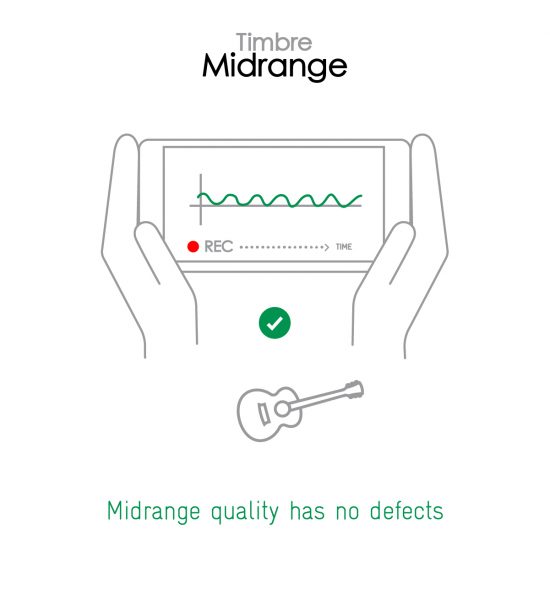
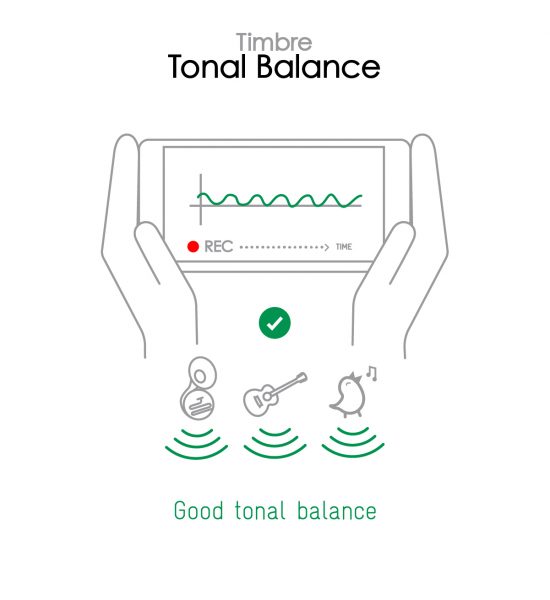
Midrange is also very clean, with a sense of fullness, thanks to a slight low-midrange boost that doesn’t take away from clarity. This low-midrange boost at around 500Hz can bring some muddiness in some cases, but vocal contents are generally very well rendered. When recording at high SPL, quality is affected. The tonal balance is relatively satisfying but a bit resonant. A strong boost at around 1kHz hinders upper midrange clarity, and the low-midrange is a bit muddy. Treble is not very bright and bass can be quite boomy despite lacking low-end extension.

Dynamics
OnePlus 10 Pro
62
81
The OnePlus 10 Pro didn’t excel in dynamics. Because of a rounded attack, the envelope rendition is inaccurate. This was particularly noticeable in urban use cases, where there is a lot of background noise. In those cases, transients seem dull and dependant on background content. This is less of an issue when recording indoors in quieter surroundings. The signal-to-noise ratio (SNR) is below average; background noises are very noticeable and sometimes even intrusive, even if voice-based contents still manage to cut through in all our use cases. When recording loud content such as concerts, the sound is very compressed, making sustain of the envelope very exaggerated compared with the rounded attack.

Spatial
OnePlus 10 Pro
66
78
The spatial attribute is a mixed bag for the OnePlus device. Sound from selfie and life video recordings made outside show blurry localizability. In indoor, quieter settings, the 10 Pro performs better. When using the memo app, the device produces good localizability. Wideness is good while recording landscape videos and when using the memo app.
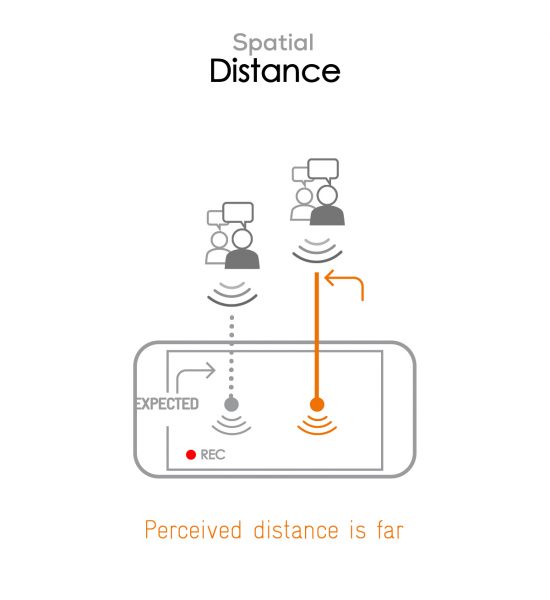
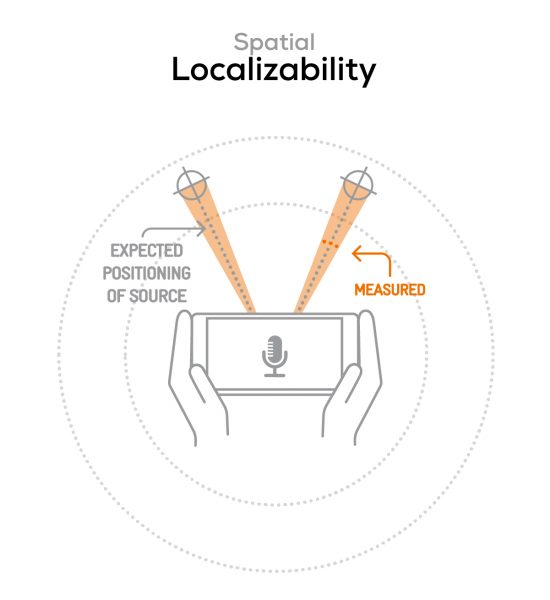
When recording video in portrait orientation, however, wideness — even if it is still noticeable — is much narrower. Rendered distance of recorded voices appears to be correct in indoor scenarios, but voices sound slightly too distant in outdoor conditions because of the overly prominent background level.

Volume
OnePlus 10 Pro
69
99
Recording loudness is satisfying. Objective measurements, however, show a significant amount of distortion at high level.
Here are our test results, measured in LUFS (Loudness Unit Full Scale); as a reference, we expect loudness levels to be above -24 LUFS for recorded content:
| Meeting | Life Video | Selfie Video | Memo | |
| OnePlus 10 Pro | -20.7 LUFS | -17.8 LUFS | -16.6 LUFS | -15.7 LUFS |
| OnePlus 9 Pro | -23.5 LUFS | -22 LUFS | -24.7 LUFS | -15.1 LUFS |
| Vivo iQOO 9 Pro | -24.8 LUFS | -20.7 LUFS | -20 LUFS | -20.7 LUFS |

Artifacts
OnePlus 10 Pro
74
97
The OnePlus 10 Pro is mostly artifact-free, except in high-SPL recordings where it shows some signs of distortion and compression, as well as a slight resonance at 1kHz.
You can check for artifacts yourself in this sample recording:

Background
OnePlus 10 Pro
39
60
The OnePlus 10 Pro offers a very clean and natural background rendition in its recordings.
Conclusion
The OnePlus 10 Pro is functional in playback — voice content is intelligible and clear. The Dolby Atmos programming allows users to choose presets that can change and even improve the sound quality. But for audiophiles, it’s bound to be a little disappointing, even considering the price that is lower than many other flagship smartphones. On the other hand, this smartphone does have the capability to produce satisfying recordings under the right conditions.



DXOMARK encourages its readers to share comments on the articles. To read or post comments, Disqus cookies are required. Change your Cookies Preferences and read more about our Comment Policy.